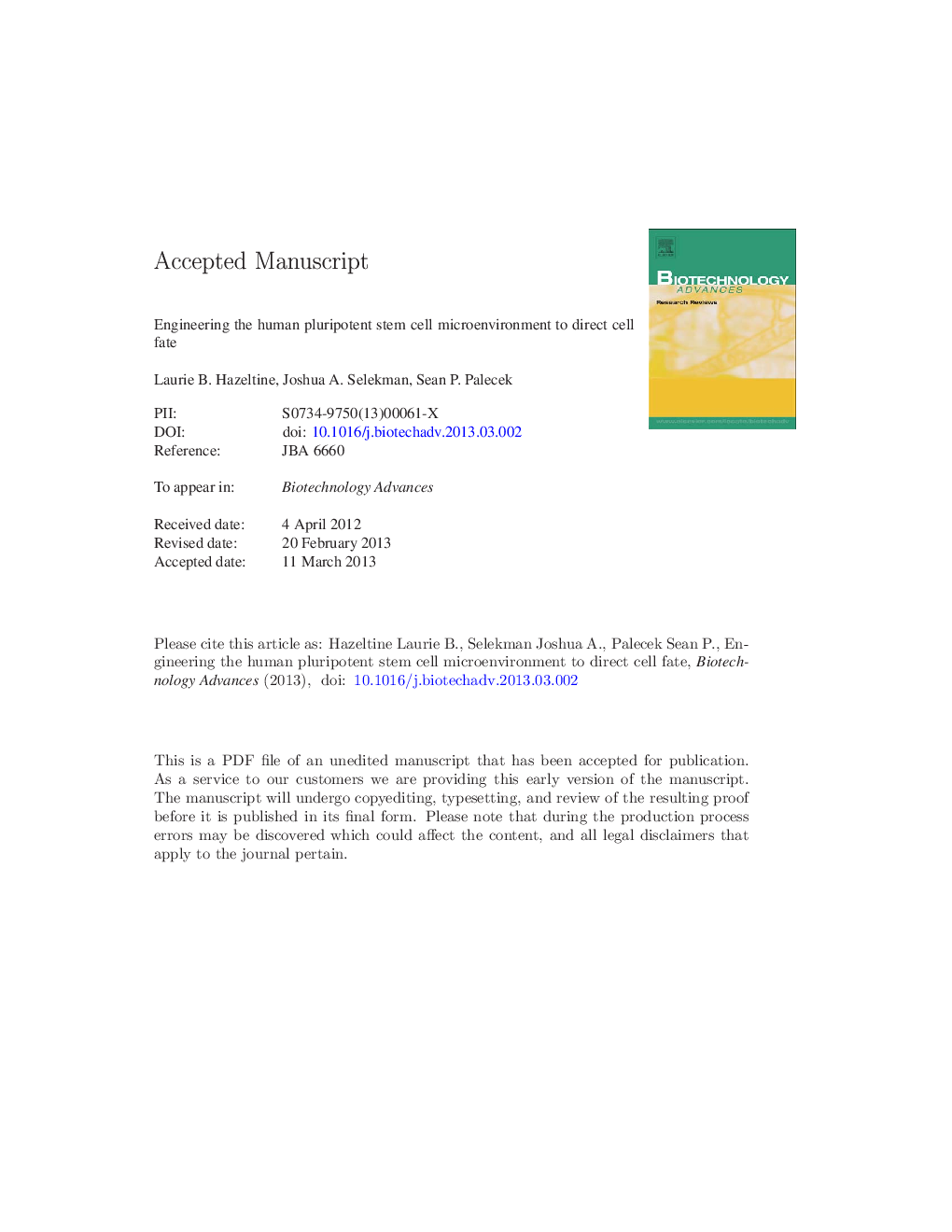| Article ID | Journal | Published Year | Pages | File Type |
|---|---|---|---|---|
| 10231416 | Biotechnology Advances | 2013 | 61 Pages |
Abstract
Human pluripotent stem cells (hPSCs), including both embryonic stem cells and induced pluripotent stem cells, offer a potential cell source for research, drug screening, and regenerative medicine applications due to their unique ability to self-renew or differentiate to any somatic cell type. Before the full potential of hPSCs can be realized, robust protocols must be developed to direct their fate. Cell fate decisions are based on components of the surrounding microenvironment, including soluble factors, substrate or extracellular matrix, cell-cell interactions, mechanical forces, and 2D or 3D architecture. Depending on their spatio-temporal context, these components can signal hPSCs to either self-renew or differentiate to cell types of the ectoderm, mesoderm, or endoderm. Researchers working at the interface of engineering and biology have identified various factors which can affect hPSC fate, often based on lessons from embryonic development, and they have utilized this information to design in vitro niches which can reproducibly direct hPSC fate. This review highlights culture systems that have been engineered to promote self-renewal or differentiation of hPSCs, with a focus on studies that have elucidated the contributions of specific microenvironmental cues in the context of those culture systems. We propose the use of microsystem technologies for high-throughput screening of spatial-temporal presentation of cues, as this has been demonstrated to be a powerful approach for differentiating hPSCs to desired cell types.
Keywords
Related Topics
Physical Sciences and Engineering
Chemical Engineering
Bioengineering
Authors
Laurie B. Hazeltine, Joshua A. Selekman, Sean P. Palecek,
